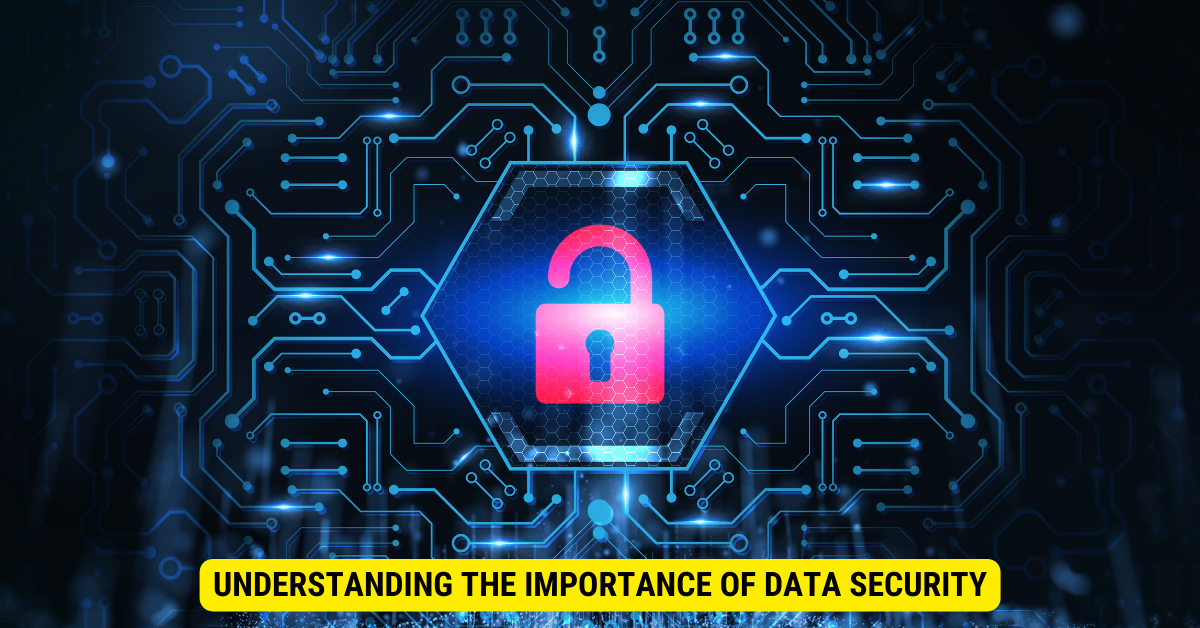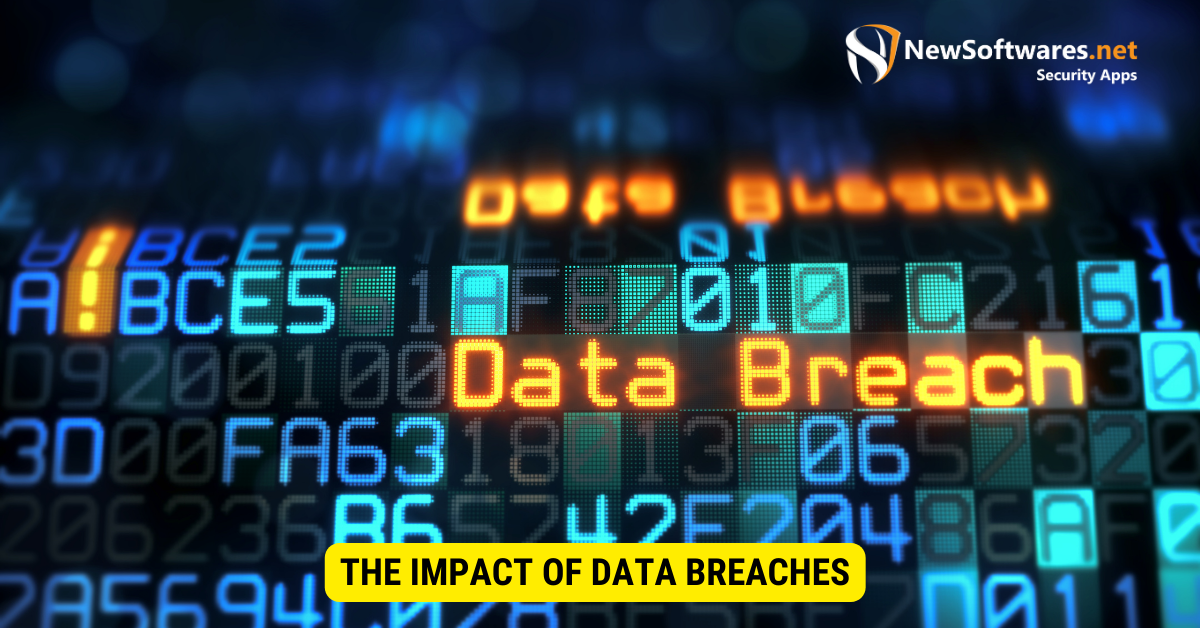Better security in data encompasses a layered approach involving encryption, robust authentication, regular audits, and continuous monitoring.
Data security has become a critical priority in today’s digital age, where information is the lifeblood of businesses and individuals. From financial transactions to personal details, the sheer volume of data generated and exchanged necessitates robust measures to safeguard its integrity. Understanding the importance of data security is crucial for any organization or individual looking to protect their sensitive information.
Understanding the Importance of Data Security

Data security plays a pivotal role in our increasingly interconnected world. With the proliferation of digital devices and the widespread adoption of cloud computing, the potential for unauthorized access and data breaches has skyrocketed. Protecting sensitive information from cyber threats is not just a matter of compliance; it is essential for maintaining trust and confidence in our digital infrastructure.
In today’s digital age, where information is readily accessible and shared across various platforms, the need for robust data security measures has never been more critical. The value of data has grown exponentially, and with it, the risks associated with its unauthorized disclosure or misuse. From personal info such as social security numbers and credit card details to trade secrets and intellectual property, the stakes are high regarding safeguarding data.
One of the primary reasons why data security is a priority is the potential repercussions of compromised data. The penalties can be severe, ranging from financial loss to reputational damage. A data breach can undermine customer trust and loyalty, resulting in a tarnished reputation that may take years to recover. Organizations that fail to protect their data often face legal and financial penalties due to the ever-growing web of privacy laws and regulations.
Furthermore, the interconnectedness of our digital ecosystem means that a breach in one organization’s data security can ripple effect, impacting other entities within the same network. This interconnectedness highlights the need for a collaborative approach to data security, where organizations work together to share best practices and mitigate risks collectively.
The Role of Data Security in Today’s Digital Age
As technology continues to advance at a quick pace, the role of data security becomes even more critical. The digital age has brought about unprecedented convenience and efficiency but has opened the door to new and sophisticated cyber threats. Hackers and cybercriminals are continually evolving their tactics, making it imperative that administrations stay one step ahead by implementing robust data security measures.
Data security is not just about protecting information from external threats; it also involves safeguarding data from internal risks. Whether intentional or unintentional, insider threats significantly challenge data security. Workers with access to sensitive information must be educated on best practices and provided with the necessary tools to protect data.
Moreover, data security is not a one-time effort but an ongoing process. As technology evolves, so do the threats related to it. Organizations must continuously assess and update their data security strategies to avoid emerging intimidations. This includes implementing encryption, multi-factor authentication, and intrusion detection systems, among other measures.
In conclusion, data security is paramount in today’s digital age. It is not just a matter of compliance; it is essential to maintain trust, protect sensitive information, and mitigate the potential consequences of data breaches. Organizations must prioritize data security, invest in robust measures, and foster a culture of awareness and accountability to ensure the integrity and confidentiality of their data.
Key Elements of Better Data Security
Data security is a serious concern for organizations in today’s digital landscape. With the rising number of cyber threats and data breaches, it has become imperative for businesses to implement robust security actions to protect their sensitive information. We will discover two key elements of better data security: Data Encryption And Secure Backups And Recovery Plans.
Data Encryption: A Necessity, Not an Option
One of the fundamental pillars of data security is encryption. Encryption is a process that uses complex algorithms to scramble data into unreadable ciphertext, making it incomprehensible to unauthorized individuals. By implementing strong encryption protocols, organizations can ensure that it remains unintelligible even if hackers or malicious actors gain access to the data.
Encryption is crucial in safeguarding complex info, such as personally identifiable information (PII), financial data, and intellectual property. It is not limited to data in transit but extends to data at rest, stored on servers, databases, or other storage devices. By encrypting data at rest, organizations add an extra layer of protection, mitigating the risk of unauthorized access.
Various encryption algorithms are available, each with its own level of complexity and security. Advanced Encryption Standard (AES), for example, is broadly known as one of the most secure encryption algorithms used today. It employs a symmetric key encryption method, ensuring that only official parties with the correct decryption key can access the data.
Implementing encryption is not a one-time task but an ongoing process. Administrations need to regularly review and update their encryption protocols to stay ahead of emerging threats and vulnerabilities. Additionally, they must ensure that encryption keys are securely managed and stored, as any compromise in key security could render the encryption useless.
The Power of Secure Backups and Recovery Plans
Data loss can have severe penalties for organizations, ranging from financial losses to reputational damage. Accidental deletion, hardware failures, natural disasters, or malicious attacks can all lead to data loss. Organizations must have robust backup and recovery plans to mitigate these risks.
Secure backups involve creating copies of critical data and storing them in secure, off-site locations. This ensures that even if the primary data is compromised or lost, organizations can restore it from the backups, minimizing downtime and data loss. Off-site storage provides an added layer of protection, as it safeguards the data from physical threats such as fires, floods, or theft.
When designing a backup strategy, organizations need to consider factors such as the occurrence of backups, the retention period for backups, and the scalability of the backup solution. Regularly scheduled backups, ideally performed in real-time or at frequent intervals, help ensure that the most up-to-date data is available for recovery.
Recovery plans are equally important as backups. Organizations must have well-defined procedures to recover data during a breach or disaster. This includes identifying the responsible personnel, establishing communication channels, and conducting regular drills to test the effectiveness of the recovery process.
Moreover, organizations should consider implementing a disaster recovery plan (DRP) to ensure business continuity in the face of a major disruption. A DRP outlines the steps and procedures to be followed during and after a disaster, enabling organizations to recover and resume their operations quickly.
The Impact of Data Breaches

Financial Consequences of Data Breaches
The financial repercussions of data breaches can be staggering. Organizations may incur substantial costs related to investigating the breach, notifying affected individuals, providing credit monitoring services, and legal proceedings. Moreover, businesses may suffer loss of revenue due to reputational damage and customer attrition. The aftermath of a data breach can drain resources and hinder growth.
Reputational Damage from Data Breaches
The loss of reputation resulting from a data breach is often immeasurable. Customers today are increasingly concerned about the security of their personal information. A breach can erode trust in an organization’s ability to protect sensitive data and lead to losing customers and business opportunities. Rebuilding a damaged reputation requires time, effort, and a commitment to reinforcing data security measures.
Strategies for Enhancing Data Security
Implementing Strong Access Control Measures
Controlling access to sensitive data is an essential aspect of data security. Organizations can safeguard that only authorized individuals can access sensitive info by implementing strong authentication measures, such as multi-factor authentication and role-based admission controls. Monitoring user activity and regularly reviewing access privileges further enhances data security.
Regular Security Audits and Updates
Data security is not a one-time effort; it requires continuous monitoring and improvement. Regular security audits and updates help identify vulnerabilities and weaknesses in existing systems and processes. Administrations can stay one step ahead of potential threats by promptly addressing these issues and staying updated with the newest security patches and protocols.
Future Trends in Data Security
The Rise of AI and Machine Education in Data Security

As the volume and difficulty of data continue to rise exponentially, artificial intelligence and machine learning algorithms are increasingly employed to augment data security efforts. From identifying anomalous patterns indicative of a breach to automating threat detection and response, AI-powered tools are revolutionizing the field of data security.
The Increasing Importance of Privacy Laws and Regulations
Privacy laws and regulations are evolving to keep up with the changing landscape of data privacy and security. With the introduction of stringent rules such as the EU’s General Data Protection Regulation (GDPR) and the California Consumer Privacy Act (CCPA), organizations are compelled to prioritize data security and privacy compliance. Failure to adhere to these laws can result in significant penalties and legal consequences.
Key Takeaways
- Data encryption, both at rest and in transit, is crucial.
- Multi-factor authentication enhances an additional layer of protection.
- Consistent security audits identify potential vulnerabilities.
- Employee training prevents human errors leading to breaches.
- Constantly updating security protocols ensures protection against new threats.
FAQs
Q: What is multi-factor authentication?
A: It requires users to provide multiple types of identification before accessing data.
Q: How often should security audits be conducted?
A: Ideally, annually or whenever there are significant system changes.
Q: Is physical security important for data protection?
A: Ensuring secure physical servers and data centers is as crucial as digital security.
Q: Why is employee training essential for security?
A: Many breaches result from human error or negligence. Training reduces this risk.
Q: What are common threats to data security?
A: Phishing attacks, malware, ransomware, and unauthorized access are common threats.
Conclusion
In conclusion, better security in data is paramount in today’s digital age. Understanding the importance of data security and executing key elements such as encryption and secure backups are vital steps toward safeguarding sensitive information. The impact of data breaches, both financially and reputationally, cannot be overstated, making strategies like strong access control measures and regular security audits indispensable. Looking to the future, the integration of AI and machine learning in data security and the increasing emphasis on privacy laws and regulations will shape the way organizations protect data moving forward. By staying vigilant, proactive, and adaptive, we can ensure better security in data for a safer digital world.
